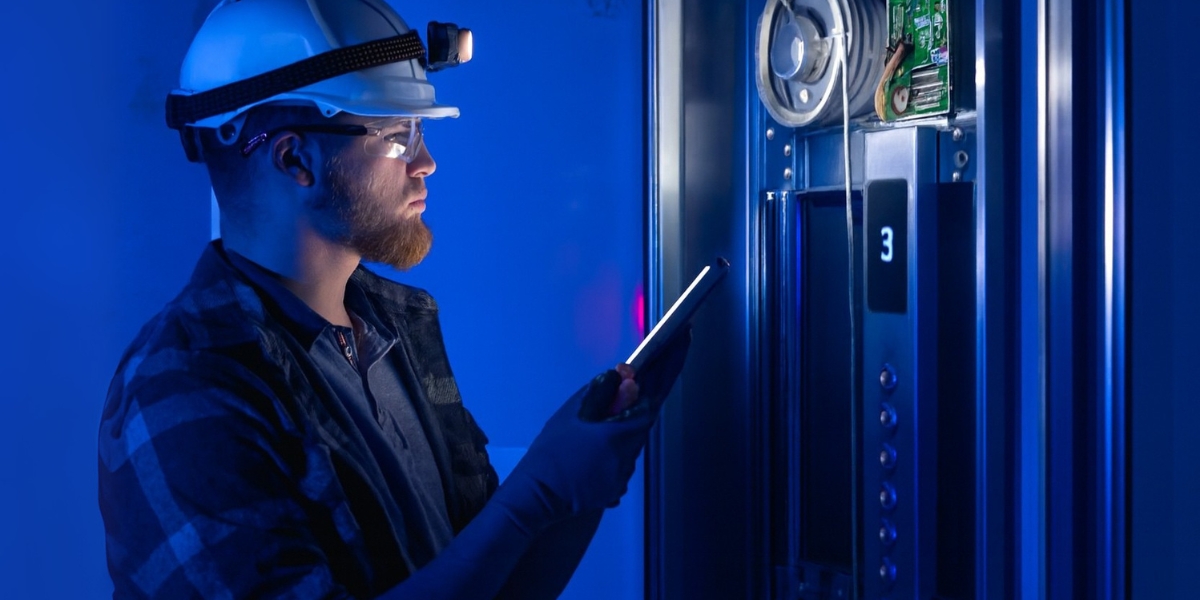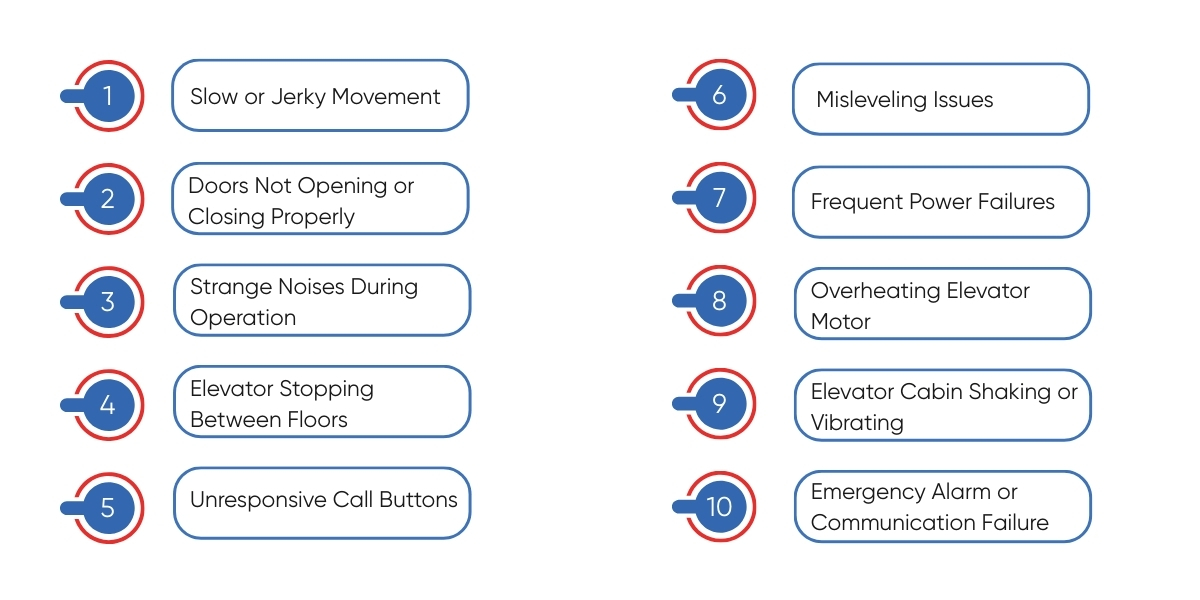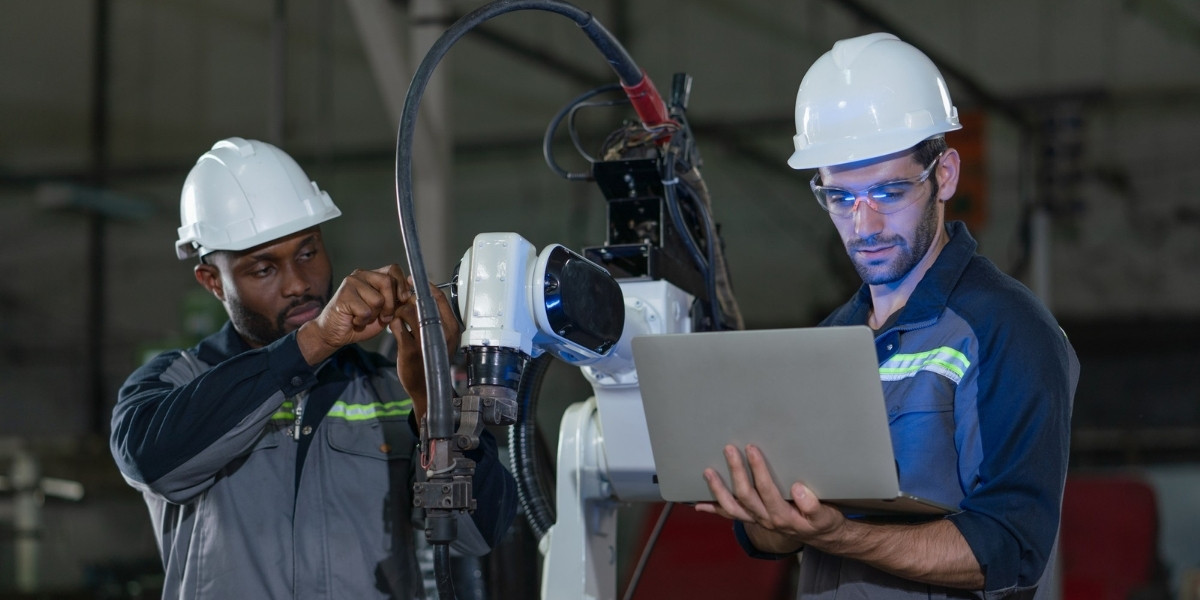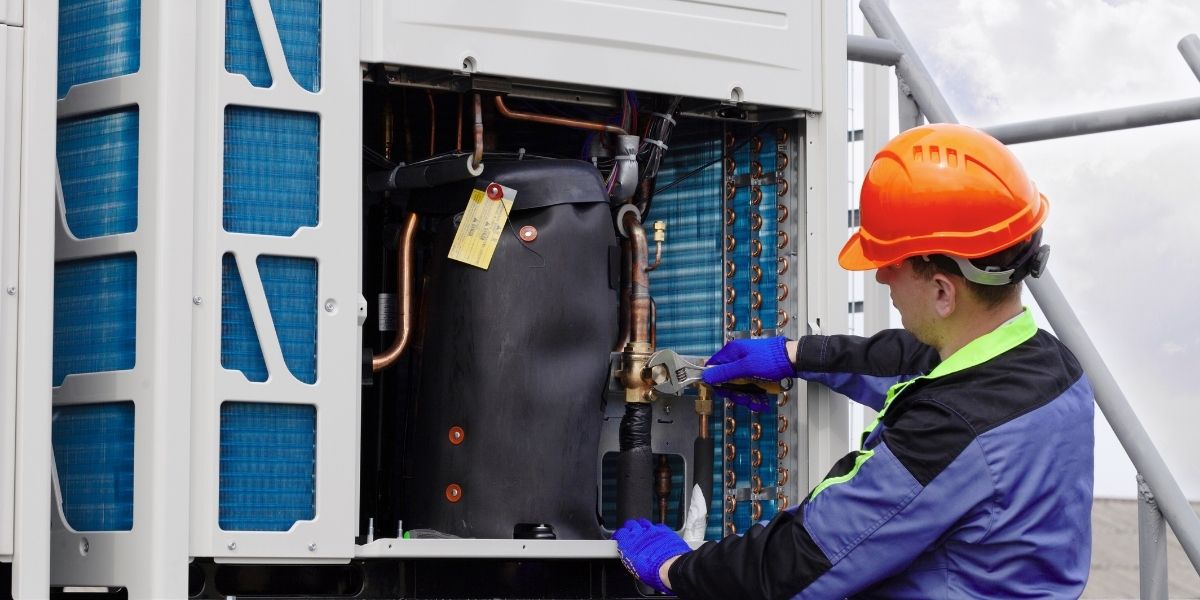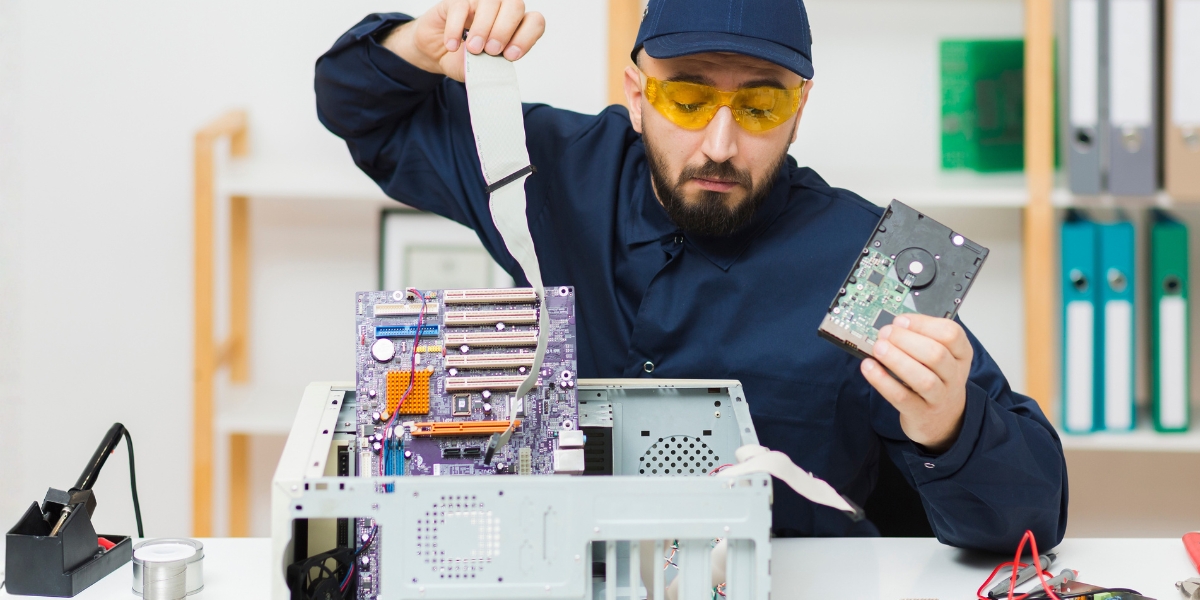Understanding the Most Frequent Elevator Problems and Effective Solutions
Elevators play a vital role in modern buildings. From residential apartments to high-rise offices, they ensure smooth movement and accessibility for everyone. But just like any other machine, elevators are prone to wear and tear. When problems occur, they not only cause inconvenience but can also raise safety concerns. Knowing the common elevator problems and how to fix them helps property managers, technicians, and users address issues quickly before they become major risks.
This guide takes a closer look at the most frequent issues, their causes, and practical ways to resolve them.
Common Elevator Problems and Tips for Fixing Elevator Problems
Elevators can face a range of challenges as they age or operate under heavy use. The most frequent issues include slow or uneven rides, faulty doors, unusual noises, sudden stops, unresponsive buttons, misleveling, power disruptions, overheating motors, cabin vibrations, and emergency system failures. These problems affect both convenience and safety, but with regular checks and proper fixes, most can be resolved quickly and effectively.
1. Slow or Jerky Movement
One of the most noticeable issues is when an elevator moves slowly or feels jerky during travel. This often happens due to:
- Worn-out cables or pulleys
- Lack of lubrication in moving parts
- Outdated control systems
Fix
Regular maintenance is key. Technicians should inspect and lubricate mechanical parts, adjust tension in cables, and replace outdated motors or controllers. If the elevator is old, upgrading the system can make a huge difference in performance and passenger comfort.
2. Doors Not Opening or Closing Properly
Elevator doors are one of the most used components, which makes them prone to failure. Problems may include doors that won’t open, won’t close, or get stuck midway.
Common Causes
- Dirt or debris blocking the tracks
- Faulty door sensors
- Misaligned door motors
Fix
Technicians usually start by cleaning the tracks and checking the sensors. If sensors are faulty, they must be replaced. Regular alignment checks for the door motor also help in preventing frequent breakdowns.
3. Strange Noises During Operation
Humming, clanking, or grinding noises inside an elevator should never be ignored. These sounds are early warning signs of deeper mechanical problems.
Possible Causes
- Loose components
- Worn bearings or belts
- Lack of lubrication
Fix
A technician should immediately inspect the system to identify the source of noise. Tightening loose parts, replacing worn bearings, and applying proper lubrication often solve the issue. Quick action prevents further damage to critical components.
4. Elevator Stopping Between Floors
Another frustrating problem is when the elevator stops midway, leaving passengers stranded.
Reasons This Happens
- Power supply fluctuations
- Faulty wiring or control boards
- Overloaded car weight sensors
Fix
A professional inspection is needed to test the power supply, repair wiring, or recalibrate the load sensors. In many cases, replacing a damaged control board resolves the issue. Partnering with the best assembly repair service provider ensures these critical components are repaired or replaced without delay.
5. Unresponsive Call Buttons
When passengers press the call button and nothing happens, it usually points to electrical or wiring issues.
Causes
- Damaged buttons due to frequent use
- Faulty electrical circuits
- Malfunctioning control board
Fix
The solution may be as simple as replacing the call button. However, in cases of deeper electrical faults, technicians may need to repair or replace wiring and circuit boards. Keeping spare parts in stock can minimize downtime.
6. Misleveling Issues
Misleveling occurs when the elevator stops slightly above or below the floor level, creating a tripping hazard for passengers.
Why It Happens
- Worn brakes
- Malfunctioning sensors
- Outdated leveling equipment
Fix
Technicians typically inspect the braking system and replace worn pads or adjust sensors. If the elevator is older, upgrading the leveling system ensures smoother stops and improved safety.
7. Frequent Power Failures
Elevators depend heavily on stable electricity. Power failures or tripped circuits can cause elevators to stop working unexpectedly.
Causes
- Poor electrical connections
- Overloaded circuits
- Faulty backup power system
Fix
An electrical inspection should be performed to identify weak connections or overloaded circuits. Installing reliable backup systems such as UPS or generators ensures elevators continue running during outages, keeping passengers safe.
8. Overheating Elevator Motor
When elevators operate continuously in tall buildings, motors can overheat, especially in poorly ventilated shafts.
Signs of Overheating
- Burning smell
- Unusual vibrations
- Sudden shutdowns
Fix
Installing cooling fans or improving shaft ventilation often prevents overheating. If the motor is old, replacing it with an energy-efficient model reduces the risk of future breakdowns and lowers electricity costs.
9. Elevator Cabin Shaking or Vibrating
Passengers may sometimes feel vibrations when riding the elevator. While minor shakes can happen due to building movement, persistent vibrations indicate mechanical problems.
Causes
- Loose guide rails
- Damaged rollers
- Imbalance in the counterweight system
Fix
Technicians should tighten rails, replace worn rollers, and balance the counterweights. Regular inspections keep the ride smooth and safe.
10. Emergency Alarm or Communication Failure
Elevators must have a working alarm and intercom system for passenger safety. When these fail, people may get trapped without a way to call for help.
Fix
Routine checks of emergency alarms and communication systems ensure they are functional at all times. Replacing outdated systems with modern communication panels improves safety compliance.
Ensuring Smooth and Trouble-Free Operation
Elevators are complex machines with many moving parts, and problems are bound to happen over time. However, most common elevator problems can be resolved with timely inspections, proper maintenance, and expert repairs. Whether it’s slow movement, faulty doors, or electrical failures, addressing these issues promptly ensures passenger safety and system reliability.
Working with elevator service providers and industrial electronics repair specialists like Horizon Elect Devices reduces downtime and extends the life of the equipment. By staying proactive, building owners and managers can minimize risks, cut repair costs, and keep elevators running smoothly every day.
